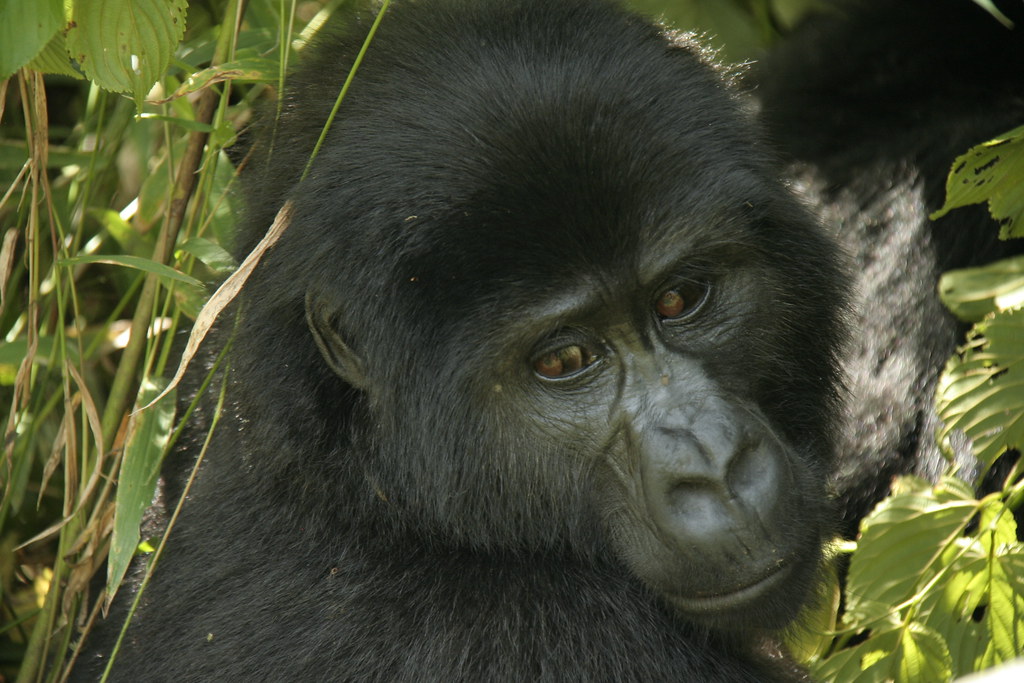Ugandan Monkey Species
Monkey Species in Uganda: Uganda is a well-known travel destination, and its amazing primate safaris from its tropical rain forests are its main draw. The evolution of primates began in Africa and extended throughout the world, as is widely known. Based on the quantity of primates found in Uganda’s tropical woods, this is absolutely true when you go there for a primate safari.
The largest population of primates in East Africa and the entire African continent is found in Uganda. There are primarily 13 species of primates known to live in Uganda’s tropical woods, but if you include the nocturnal primates that live in Kibale National Park and Budongo Forest, the number may rise. The chimpanzee is the focal point of practically all primate safaris in Uganda, out of the 13 primate species that may be found there. Since chimpanzees and humans share over 98% of their DNA, chimpanzees are thought to be the most similar animals.
Although chimpanzee safaris are well-known in Uganda, the country’s woods are home to much more than just these primates. In addition to chimpanzees, Uganda is fortunate to have a wide variety of other primates, including monkeys of various types, as explained below:
Locally, black and white colobus monkeys are referred to as engeye or ekiremu. The majority of Uganda’s tropical forests, including those in Kibale National Park, Budongo, Mabira, and other regions, are home to them. Whitetails and black bodies distinguish the black and white colobus monkeys. Additionally, they lack thumbs on their fingers. The black and white monkeys are more susceptible to mishaps involving falls from trees because of this abnormality. As a result, they are readily located among the lower branches of trees and bushes. During nature walks in Kibale Forest National Park, you get the chance to witness a variety of black and white colobus monkeys.
Among Uganda’s monkey species, red colobus monkeys are frequently seen in Kibale Forest National Park. In order to keep predators out of their areas, red-tailed monkeys are known for being fierce warriors. The size of red-tailed monkeys is very tiny. A male can weigh up to 13 kg, while a female can weigh up to 9 kg. They thrive in the jungle because, despite their diminutive size, they are capable of fierce self-defense.
The appearance of Ugandan blue and red-tailed monkeys differs slightly from that of other Ugandan monkey species. The people who live in Kibale refer to them as the enkunga. In Kibale Forest National Park, these are the tiniest monkeys. Red-tailed monkeys from Uganda are distinguished by their white, hairy cheeks and heart-shaped noses. The blue monkeys have blue backs, although they aren’t always blue in hue. Among other tropical forests in Uganda, they can be found in the Kyambura Gorge of Queen Elizabeth National Park, Kibale
National Park, and Bwindi Impenetrable National Park.
Another kind of monkey found in Kibale National Park is the grey-cheeked mangabey. The Bigodi wetland refuge in Kibale National Park and the Semliki wildlife reserve are good places to watch grey-cheeked mangabeys. The anatomical characteristics of these monkeys—their cheek pouches, which aid in consuming adequate food—led to their names. The grey-cheeked mangabeys communicate by shaking their heads, which produces a slapping sound from the lips..
Another rare kind of monkey found in Uganda is the golden monkey. Only Mgahinga National Park is home to Uganda’s golden monkeys. They like playing in the bamboo forest of Mgahinga National Park and can adapt to highland environments. If you want to monitor the golden monkeys in Mgahinga National Park, you must walk quickly enough because they move more quickly than chimpanzees. The mountain gorillas and golden monkeys coexist together in Mgahinga National Park. As a result, your golden monkey tracking permit may be your lucky ticket to visit the mountain gorillas for less money.
Another kind of monkey that can be seen in Kibale National Park is the L’hoest. The l’hoest monkeys in East Africa find refuge at Kibale National Park. The greatest number of l’hoests monkeys reside there. Extremely timid terrestrial primates, the l’hoest monkeys are listed by the IUCN as vulnerable and in grave risk of extinction. The l’hoest monkeys can also be found in the impassable national park of Bwindi.
Patas monkeys live in troops, which are rather large groups of 30 to 50 individuals. These species are widespread in Ugandan woodlands, including Kibale Forest. Among other places, Murchison Falls National Park and Mabira Forest are home to several Patas monkeys.
Mountain gorillas, chimpanzees, and baboons are the most sought-after primates in Uganda; they may be found at Bwindi Impenetrable National Park and Kibale National Park.
Baboons are the most numerous and courageous primates in Uganda. Additionally, there are primates known as nocturnal primates—such as galagos, pottos, and bush babies—that are difficult to spot during the day but prowl the jungles at night. During the nighttime nature treks in Budongo Forest and Kibale National Park, you can spot the bush babies.
The most visited primates in Uganda are mountain gorillas, which may be found in Bwindi Impenetrable National Park, despite the adaptability of monkeys in Uganda’s tropical woods, such as Kibale Forest National Park. After mountain gorillas, chimpanzees are the second most visited primates. The only nation in Africa having a sizable chimpanzee population in Kibale National Park is Uganda. Nonetheless, you get the opportunity to see practically every other type of monkey in Uganda while trekking chimpanzees.




